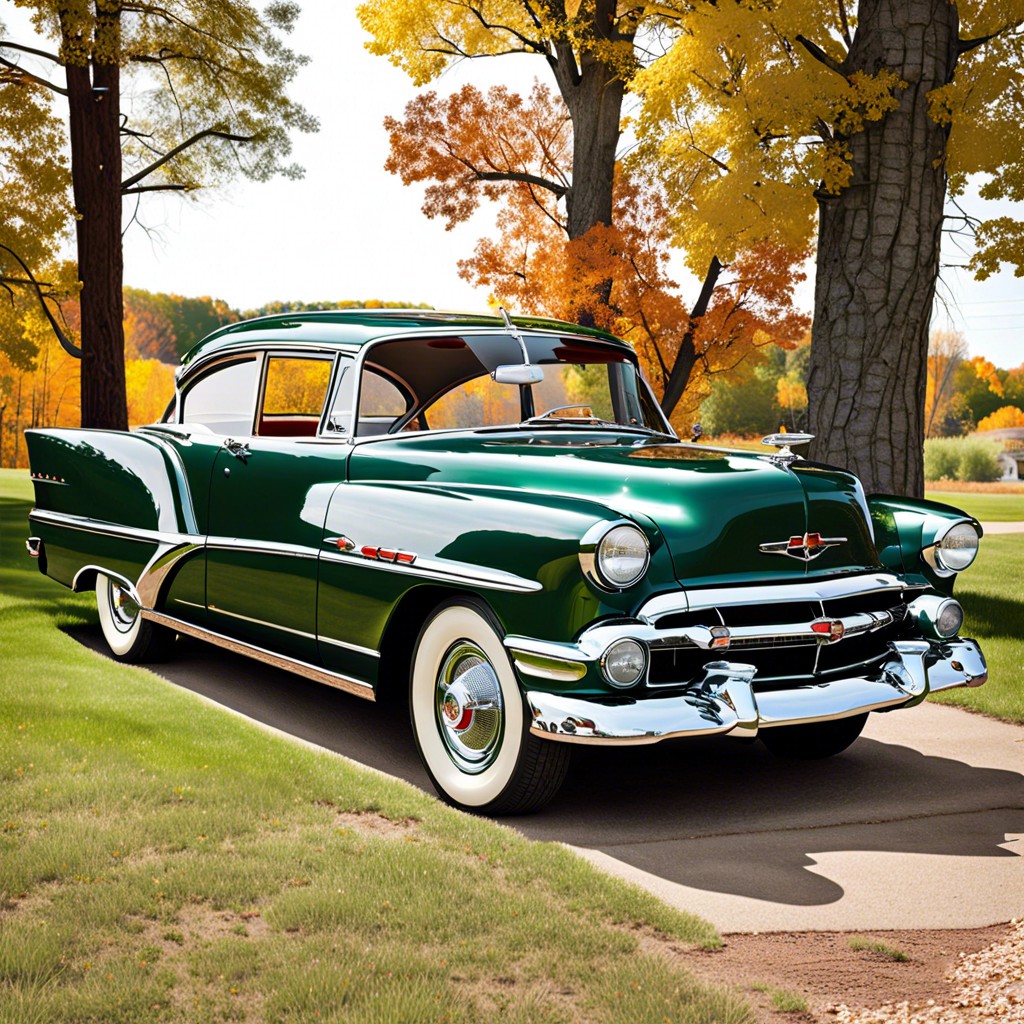Last updated on
Transforming your garage into a personalized gym is an excellent way to combine convenience with physical fitness, offering you the flexibility of working out at home.
Transforming your garage into a gym is an excellent way to maximize the use of your space, save on gym membership costs, and exercise in the comfort of your own home. Whether you’re a fitness enthusiast or just starting out, there are countless ways to design a garage gym that suits your needs.
This article will delve into various garage gym ideas, including space utilization, equipment selection, and aesthetic enhancements. From compact workout corners to full-blown fitness studios, you’ll discover how to create a personalized workout space that motivates and inspires.
Stay tuned for detailed insights and practical tips to help you build your dream garage gym.
Install a Heavy Bag for Boxing Workouts
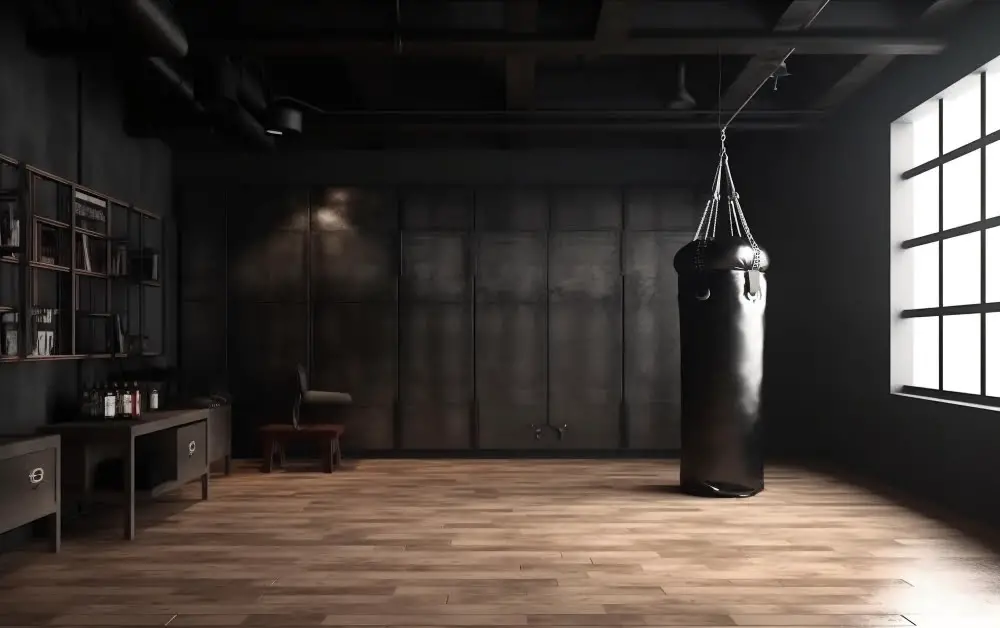
Installing a heavy bag in your garage gym offers an excellent opportunity for high-intensity boxing workouts, simultaneously engaging different muscle groups. Here’s how to effectively incorporate a heavy bag into your gym space:
Firstly, choose a heavy bag suitable for your skill and fitness level. They come in various sizes and weights, so it’s essential to find one that matches your training needs.
Next, consider the placement. Concrete garage walls or ceilings with reinforced beams are ideal locations for mounting the bag, ensuring it remains securely in place during your workouts.
Furthermore, installation demands careful consideration for safety. A sturdy mounting bracket that is capable of supporting the bag’s weight needs to be installed.
Also, remember to account for a sufficient clear space around the bag. This will ensure smooth motion and prevent potential injuries resulting from accidentally hitting other gym equipment.
Last but not least, invest in some good quality boxing gloves to protect your hands during workouts.
Properly integrated into your garage gym, a heavy bag can bring variety to your routine and challenge your stamina, strength, and coordination in new ways.
Add a Weight Bench With Adjustable Weights
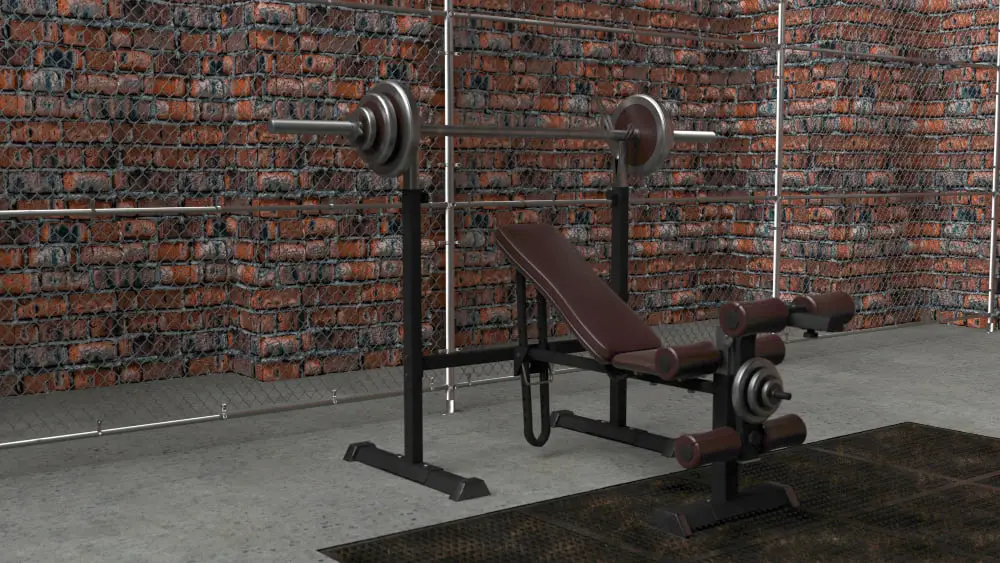
A weight bench offers versatile gym options. By going for an adjustable weight bench, you get to diversify your workouts, targeting different muscle groups. It invites more complexity and depth into your garage gym.
Select a comfortable, sturdy bench that can handle your weight plus your intended lift weight. Ensure the bench has a strong, stable base and an adjustable backrest for incline, decline, and flat exercises.
To get started, here are some essentials to consider:
- Barbells: A set of them in varying weights adds to your weightlifting options.
- Weight Plates: These come in both standard and Olympic sizes; your bench’s bar will determine the correct plate size. Make sure to get a variety so you can increase resistance as needed.
- Bench Press Rack: To safely work with heavy weights, it’s worth investing in a good rack.
- Safety Straps or Pins: These will catch the barbell if you drop it, enhancing your safety.
- Weightlifting Gloves: Protecting your hands from callouses and improving grip are two key benefits of these gloves.
Remember, always prioritize good form, it prevents injuries and ensures optimal results from your workout. It’s all about making those home workouts efficient and effective.
Install a Treadmill for Cardio Workouts

Choosing the location for your treadmill is crucial, it will have a direct impact on the efficiency and safety of your cardio workout. A corner of the garage, where it won’t obstruct walking paths or other gym equipment, is an ideal choice. Ensure enough open space behind it to move safely on and off the treadmill.
Select a treadmill based on your fitness goals and allotted budget. From manual to motorized, basic to sophisticated with interactive consoles for virtual workouts, options are plenty. Size is another determinant; foldable treadmills save significant space when not in use.
Flooring can’t be overlooked when placing a treadmill. Optimum shock absorption is vital for a low-impact workout and longevity of the machine. Rubber mats or tiles are ideal, providing stability and noise reduction.
Maintenance must be a priority. Regular cleaning and lubricating, as per the manufacturer’s instructions, will ensure smoother operation and prolong the lifespan of your treadmill. Future-proof your workout area by considering treadmill servicing and repairs, so your cardio routines do not get interrupted.
Installing a fan or ensuring a proper ventilation system will help in maintaining a comfortable and sweat-free environment for those intense cardio sessions. Task lighting, too, could be a good addition for atmospheric adjustment, enhancing focus during your workouts.
Finally, while setting up, point the treadmill towards a source of entertainment, like a television or a window with a good view. This will not only keep boredom at bay but also motivate and make your cardio sessions more enjoyable.
Create a Yoga or Stretching Corner With Mats
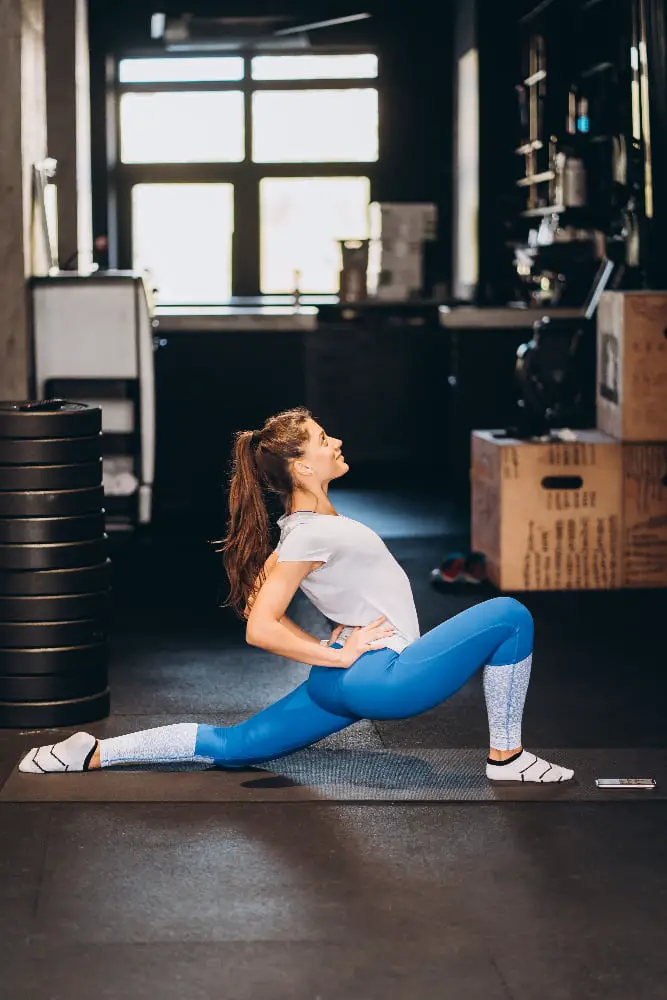
To set up a dedicated area for yoga or stretching, first choose a quiet corner of your garage to help promote a relaxing environment for meditative practices. Ensure this space is away from more hazardous gym equipment and has ample floor area.
Next, invest in a couple of comfortable yoga mats. These mats, unlike typical exercise mats, have a textured surface to prevent slipping during yoga poses. They also provide cushioned support for seated and kneeling positions.
For enhanced comfort, you might want to consider yoga blocks and bolsters that can aid in a variety of poses, especially for beginners. They help provide extra support, balance, and extend your reach during challenging stretches.
Maintaining a neat storage system in your yoga corner is crucial as well. A simple cubby or open shelving unit would suffice for organizing your mats, towels, blocks, and other yoga accessories.
Lastly, consider the lighting and ambiance. Soft, warm lights or natural light filtering in can dramatically enhance the tranquility of the space. A small indoor plant could also add a touch of nature and serenity. Do remember, this spot is about relaxation, so customize it according to what calms and motivates you.
Wall-mount a Pull-up Bar for Upper Body Workouts
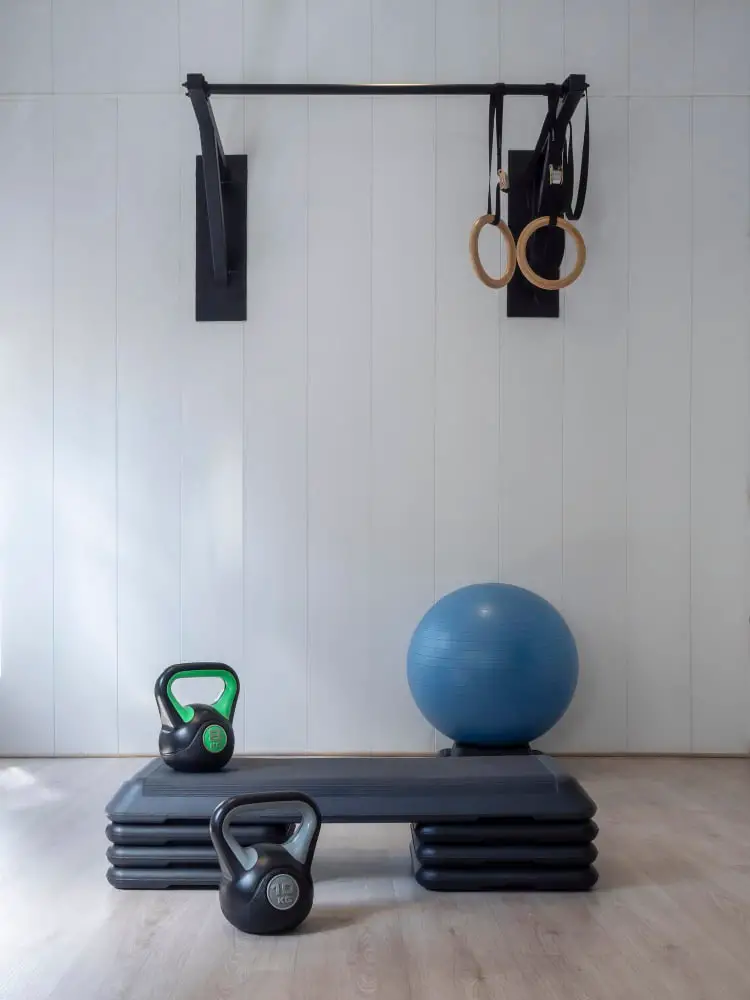
Considering the available space and ceiling height, strategically placing a wall-mount pull-up bar can transform the garage into a gym, focusing on upper body workouts.
Choose a part of the wall that’s free from obstructions. Use a stud finder to locate sturdy parts of the wall before you install to ensure the pull-up bar is secure.
Look for options with multiple grip positions. The variety in grips translates to diverse workouts targeting different muscles. Close-grip pull-ups can emphasize the lower lats, while wide grip pull-ups target your upper lats and mid-shoulders.
Padding in the grips makes usage comfortable and prevents blisters, increasing longevity of the workout.
Safety should be your top priority. Regularly check the bar’s stability and also always keep the floor space beneath clear to avoid accidents.
Position the bar at a height that fits you: too low might limit your movements, too high can make usage difficult.
Remember that consistency is key in workouts. Having a pull-up bar conveniently at eye-level can act as a visual motivator to stick to exercise routines.
Lastly, consider professional help for installation if you’re not confident about putting up the bar securely yourself. The investment is worth the assurance of safety and effective workouts.
Have a Rowing Machine for a Full-body Cardio
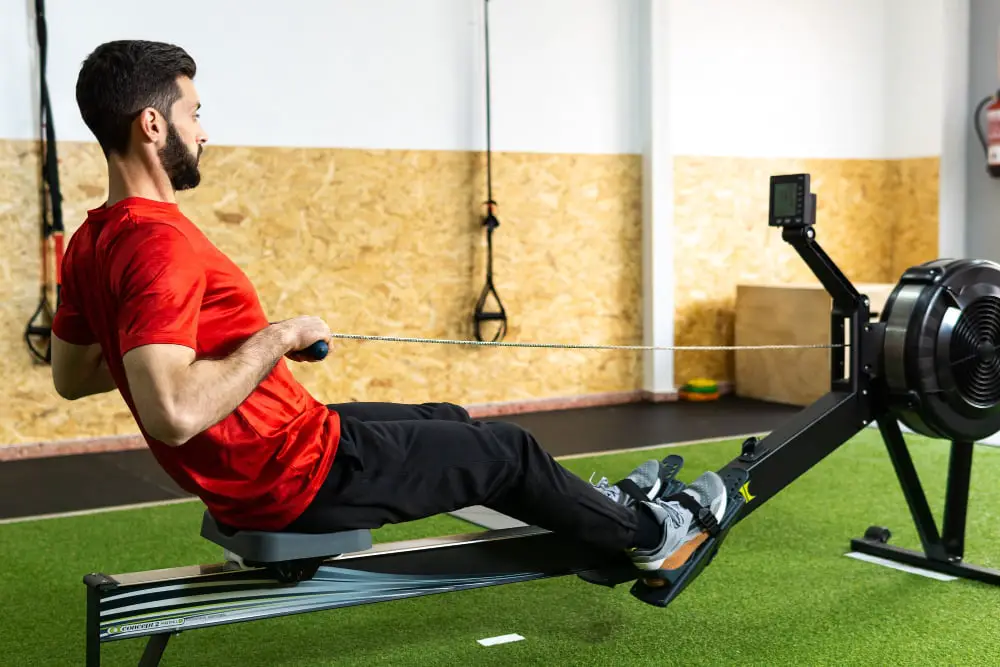
Selecting the right rowing machine is crucial as they come in different types: air, magnetic, hydraulic, and water rowers. Each type presents unique resistance modes, influencing the overall workout experience. For instance, water rowers mimic real-life rowing feel and prove quieter than air rowers, while hydraulic rowers suit those with limited garage space due to their compact design. Air rowers, on the other hand, offer a smooth, natural rowing stroke but can be loud. Magnetic rowers are loved for their virtually silent operation and the consistency of resistance.
Opt for a machine with strong, sturdy construction to endure your demanding workouts and last a lifetime. An ergonomic design with padded handles and a comfortable seat will offer you the necessary comfort for long workout sessions.
Incorporating various resistance levels helps to cater to different fitness levels. It allows you to challenge yourself as you progress, making your garage gym versatile.
Investing in a rowing machine with a clear, intuitive display monitor helps to track your fitness data accurately. Modern machines offer monitors that can connect to fitness apps for advanced tracking, allowing you to keep tabs on your progress over time.
Remember also to consider the storage aspect. Some rowing machines can be folded up and stored out of the way when not in use. Others, particularly water and air rowers, might require more space.
Don’t forget about maintenance. While hydraulic and magnetic rowers require minimal maintenance, water and air rowers might need a bit of upkeep to maintain optimal performance, such as changing the water or oiling the chain.
Lastly, consider the cost. Rowing machines can vary significantly in price depending on their type and features, so choose one within your budget that meets your specific needs.
Add a Plyometric Box for Jump Training

Integrating a plyometric box into your home garage gym can amp up your workout routine. This versatile piece of equipment is specifically designed for jump training and it can help improve your speed, power, and strength.
Firstly, select a plyometric box according to your fitness level. They come in different heights, so beginners might start with a smaller one, while more advanced fitness enthusiasts may choose a higher box.
Next, think about placement. Ensure there’s enough room around the box for safe landings and room to maneuver. Keep it away from walls, other equipment, or anything breakable.
There are numerous exercises to explore with your plyometric box. Box jumps are the most common, requiring you to jump onto the box from a standing position and then jump or step back down. Step-ups, lateral box jumps, and box squat jumps are also popular plyometric exercises to consider.
Lastly, proper use is crucial to prevent injuries. Always warm up before starting any workout and gradually increase the intensity. When jumping, land softly to minimize the impact on your joints.
Incorporating a plyometric box into your garage gym can offer a range of exercises to enhance your athletic performance or to simply add a fun, energetic element to your workout.
Place Dumbbells of Various Weights
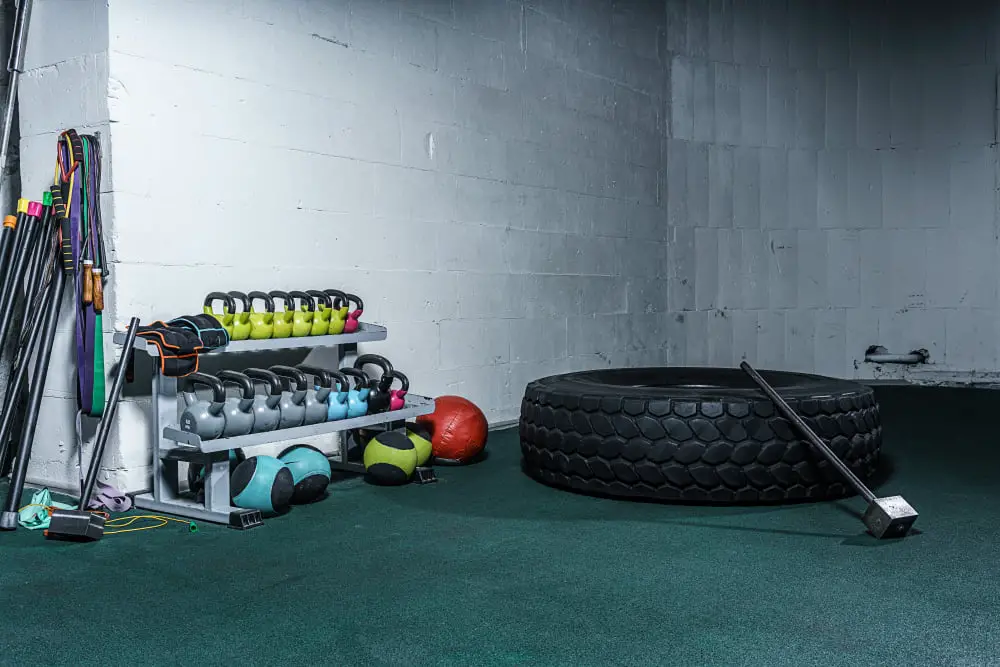
Dumbbells are key to a wide array of exercises and should be a non-negotiable feature in your garage gym. Consider acquiring a set that span a range of weights – light for high-rep, low-intensity workouts, heavier for strength training.
Remember, too much of anything is never a good thing; maintain a clutter-free work area by employing a dumbbell rack. Racks save on space and bring considerable organization, enhancing the workout area’s safety as loose weights can be a trip hazard.
Invest in durable, preferably cast-iron, dumbbells for longevity. If budget is not an issue, adjustable dumbbells bring real convenience with their ability to change weight with a simple dial, making them great space-savers too.
For beginners, start with light weights and gradually increase as strength improves. Always remember that proper form is more crucial than the weight used; incorrect form can cause injury.
Speaking of safety, place a rubber mat under the weights to protect the floor from damage by the dumbbells. Such a mat will also provide a comfortable, slip-resistant surface during your workout.
Finally, complement your dumbbells with a bench and open up a wider range of potential exercises such as bench presses and flyes to amp up your strength training.
Set Up a Squat Rack

Choosing the perfect location is crucial. You would need an area with a height clearance higher than your reach while standing on your tiptoes. This allows you to fully extend while lifting, especially in overhead presses.
Ensure that the rack fits in the space. Measure the area carefully to ensure there’s adequate room for your rack, considering its length, width, and height.
Installation demands precision. If you’re building the rack, follow the manufacturer’s instructions closely. If you’re not comfortable with DIY installations, consider hiring a professional service to avoid any potential injuries or accidents.
Safety is paramount. Make sure your squat rack has safety bars or arms. These features catch the barbell if you cannot complete a lift, protecting you from potential injury.
The floor needs to be supportive and shock-absorbent. A thick, rubber gym mat will provide the needed support and protect your floor from falling weights.
The right barbell is key. Opt for an Olympic barbell compatible with your rack and consider the types of lifts you will be performing.
Storage is important. Choose a rack with a built-in bar and weight storage, which is ideal for small spaces as it keeps the area tidy.
Comfort is essential. Squat racks with an adjustable height are recommended for comfort and to cater to exercises that require different bar heights.
Set-up your rack close to a wall if possible. This allows extra space for other exercises or equipment in your garage gym.
Remember, your squat rack is multipurpose. It isn’t just for squats; you can use it for bench presses, overhead presses, rows, and several other exercises making it a versatile piece in your garage gym.
Have a Stationary Bike for Indoor Cycling
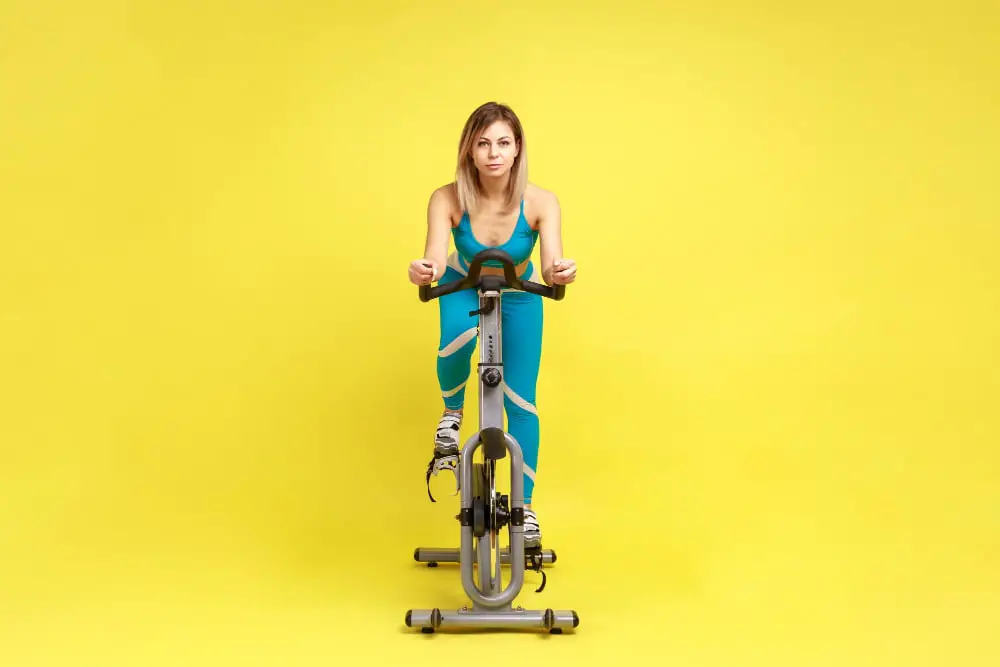
A stationary bike serves as a fantastic, low-impact option for those looking to incorporate cardio into their garage gym setup. It’s versatile, suitable for either an intense sprint session or a casual pedal, which makes it a worthy addition in creating garage gym diversity.
Choose a spot that is well ventilated and spacious for your stationary bike. You would not want to knock into other equipment while hopping on or off the bike. Ensure there’s room for you to safely mount and dismount.
Consider adding a fan nearby for coolness, as indoor cycling can generate a lot of heat. Also, you might enjoy having a TV, computer, or tablet holder to entertain yourself during workouts or to follow along with online spin classes.
Anti-slip mats under the bike can be useful as they protect the floor and reduce noise levels, which are particularly important in a garage setting.
If space constraints are an issue, opt for a folding stationary bike. These bikes can be folded up when not in use, freeing up valuable square footage for other activities.
Maintenance is relatively simple. Regularly wipe down after use to prevent built-up sweat from corroding the frame. Also, keep the chain or belt drive well lubricated for a smoother ride.
Remember, comfort is paramount. Choose a bike with an adjustable saddle and handlebars. This ensures proper ergonomics, reducing the risk of discomfort and injury during long rides.
In essence, having a stationary bike enriches your home exercise routine, offering a beneficial cardio workout while providing some entertainment or mindfulness time too.
Include Kettlebells for Functional Training
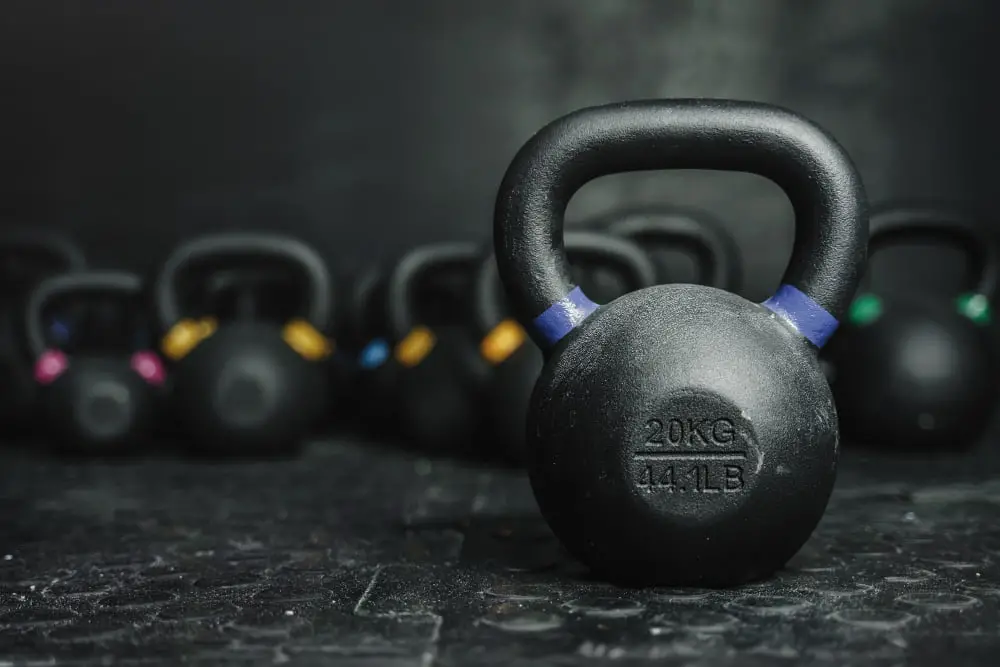
Incorporating kettlebells into your garage gym allows for a wide range of exercises that can promote strength, flexibility, and balance. Not only are they compact and easy to store, but they’re also incredibly versatile. Kettlebell swings, for example, are a popular compound exercise that improves both cardiovascular endurance and muscle strength.
Goblet squats with kettlebells are another strength-building move that engages your core, upper body, and lower body simultaneously. Similarly, the Turkish Get Up is a total body exercise that promotes mobility and stability. For more targeted strength work, exercises such as the kettlebell press and kettlebell rows can be effective for upper body training.
To safely incorporate kettlebells, you need to ensure the right technique is used to avoid injury. Also, consider purchasing kettlebells of varying weights to accommodate different workouts and strength levels.
Furthermore, remember to clear enough surrounding space to perform kettlebell exercises safely without the risk of knocking over other gym equipment or causing injury. Lastly, handy kettlebell storage racks can be a wise investment to keep your garage gym tidy and organized.
Install a Wall Ball Target

Installing a wall ball target can be an engaging and versatile addition to your garage gym, enabling you to practice throw and squat exercises. The first task is to select an appropriate wall. It should ideally be flat, solid, and without any obstructions.
After selecting the suitable wall, you need to decide on the height of the target, dependent on the types of exercises you plan to undertake. Typical heights can be around 9-10 feet off the ground.
Next, you should choose your target. A simple piece of brightly colored tape may suffice, marking the spot to aim your throws. If you want a more professional setup, consider a dedicated wall ball target, available in various designs to fit your gym’s layout.
Mounting differs based on whether you use a dedicated target or tape. If using tape, simply stick it at the decided height. For a professional target, follow the manufacturer’s instructions closely for secure installation.
Remember to buy wall balls of different weights to accommodate varying workout intensities. These tools are readily available in fitness stores in sizes ranging from 2 to 20 pounds.
Always exercise caution when throwing wall balls. Aim carefully and hold the ball firmly to prevent accidents. Clean and store your wall ball suitably after use to increase its longevity.
In a nutshell, to accommodate a wall ball target in your garage gym, you need to identify a suitable wall, decide on the height for the target, choose between tape and a professional target, install it properly, and ensure safe usage and storage.
Set Up a Power Tower for a Variety of Workouts
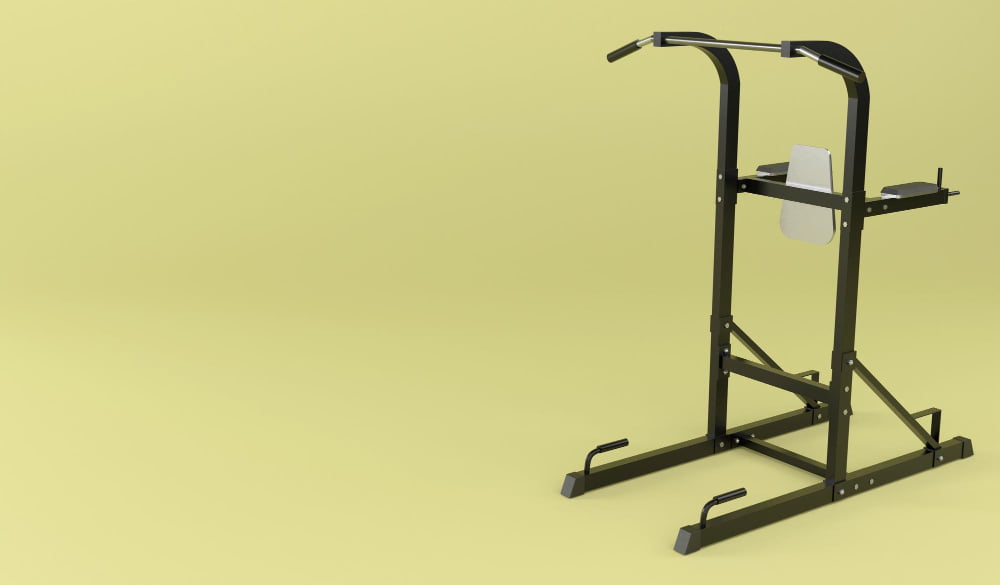
Selecting a suitable power tower is crucial, considering its multiple functionality options. For strength building and calisthenics, this multi-gym equipment is a worthy addition. It possibly includes a pull-up bar, a dip station, and push-up handles.
Before settling for any power tower model, ensure it aligns with your workout requirements and the available space in your garage. Some models are compact while others may necessitate a larger area, especially if they include extras like a sit-up station.
Upon your selection, move on to the set-up phase. Most units come with a user manual for straightforward assembly. Nevertheless, you might require some tools like a wrench, pliers, or a cordless drill in some cases. It’s advisable to have a partner help you out during the setup process for heavy parts.
Post-assembly, position your power tower strategically – ideally, in an uncluttered area where you can perform all exercises without knocking into anything. The ideal location should have enough clearance above for pull-ups and around for dips.
Once set-up, kick-start your fitness journey, focusing on pull-ups to strengthen your back, arms, and shoulders. Dips are excellent for developing your triceps and chest muscles. Push-ups, on the other hand, can enhance your lower chest and shoulder muscles. Remember to start with exercises you are comfortable with and gradually include more challenging ones as your strength increases.
Always maintain your equipment to prevent any injuries and enhance its durability. Ensure the power tower remains steady during your workouts and tighten any loose screws promptly.
Place a Mirror On One Wall for Form-checking

Adding a mirror to your garage gym offers more benefits than meets the eye. It serves as a valuable tool in perfecting form while performing exercises which, in turn, minimizes the risk of injuries. More so, having the ability to see yourself as you move through different routines gives immediate feedback on how well you’re executing the motion.
To properly install a mirror, first, ensure the surface of your chosen wall is smooth and clean. A large mirror is preferable for a comprehensive view of your movements. It should be firmly mounted to the wall, at a height that offers a full-body reflection.
Next, it is imperative that the gym apparatus is arranged thoughtfully to avoid any interference with the reflection. Also, be mindful of the lighting. Position the mirror in a way that natural or artificial light does not create a glare.
Proper maintenance is also essential. Regular cleaning will provide a clear reflection and keep the mirror in peak condition for longer.
Remember, the mirror should be used as a tool to check form, and not just for vanity. Don’t get distracted by your appearance; focus on ensuring your movements are precise and executed correctly.
Remember, achieving your fitness goals depends not only on your workout program but also on how diligently you perform each exercise. A wall mirror in your garage gym can indeed be a valuable addition in your pursuit of fitness.
Set Up an Area With Resistance Bands
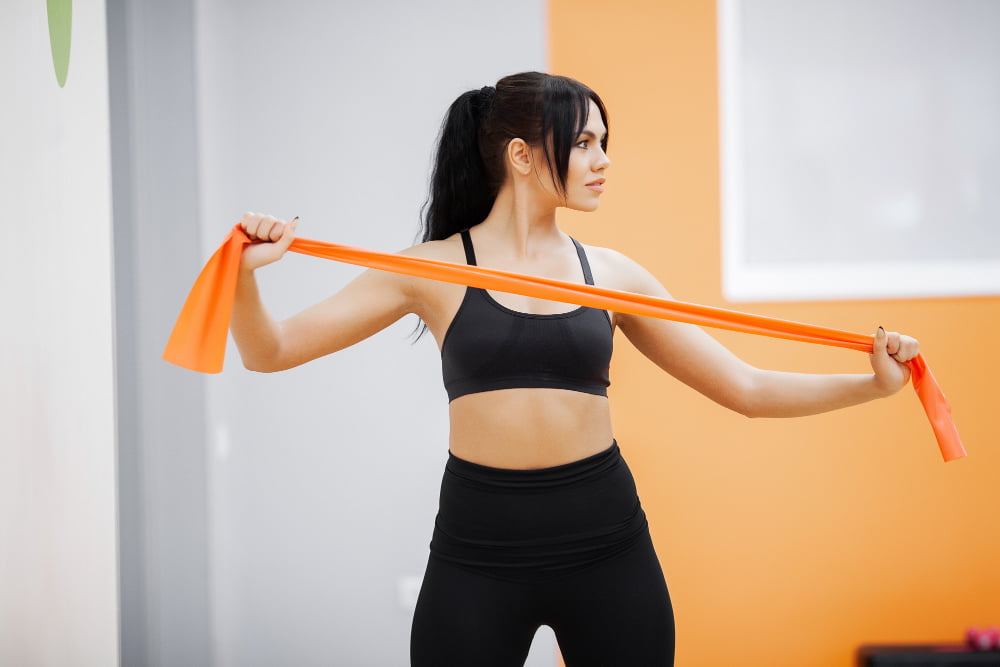
When dedicating a space for resistance bands, it’s vital to consider the types of exercises planned and the amount of room they’ll necessitate.
For starters, plan to mount or hang a set of versatile bands from hooks or a wall rack, ideal for standing exercises and full-body workouts. Be sure to secure them in a place that affords enough room for movements such as lunges, presses, or pulls, without obstacles.
For exercises done while sitting or laying down, keep a non-slip sit pad or a yoga mat within reach. This will afford comfort and reduce the risk of injuries during floor workouts.
Storage is key: utilize a rack, hooks, a storage box, or a drawer to keep the bands organized and increase their lifespan by protecting them from undue tension or friction.
Lastly, some accessory equipment might come in handy. For instance, door anchors will allow for a myriad of additional exercises, expanding the range of workouts that can be performed with your bands.
Safety is paramount. Always check your bands for wear and tear before each workout, and discard any bands that show signs of degradation. Resistance bands, when maintained and used properly, bring a versatile functionality to your home gym setup.
Have a Medicine Ball for Full-body Workouts
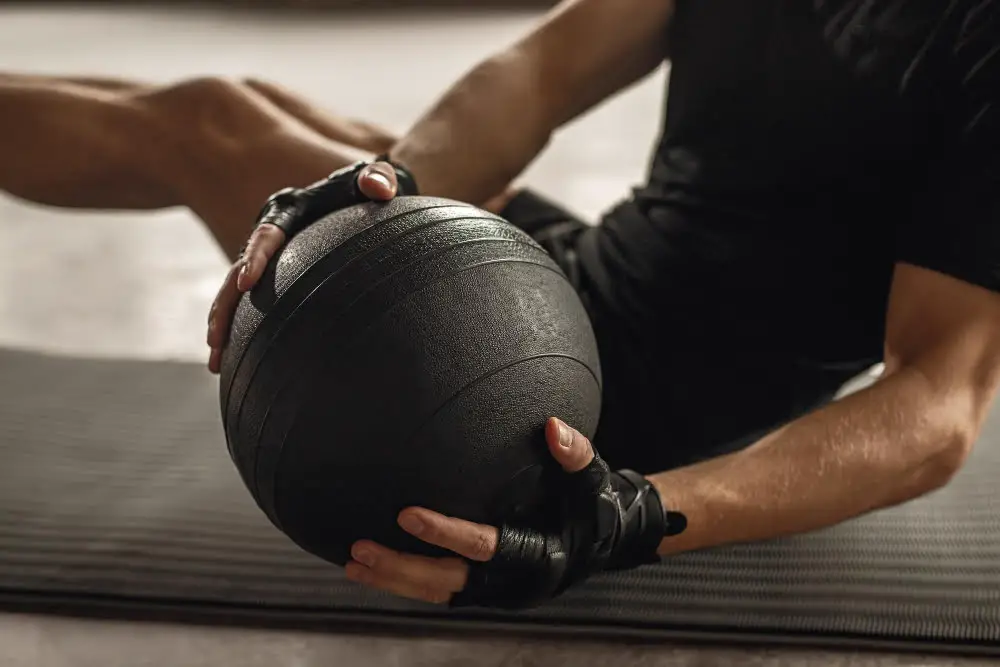
A medicine ball serves as an excellent tool for amplifying full-body workouts, engaging the core as well as other muscles simultaneously. Its versatility lends itself to a myriad of exercises, catering to both beginners and advanced fitness enthusiasts.
To start off, you could incorporate medicine ball slams into your fitness routine. This exercise targets a number of muscle groups, giving you an effective full-body workout. Additionally, your core strength and stamina will see significant improvements.
Another exercise to consider is the medicine ball squat. Standard squats are known for their efficiency in targeting lower body muscles, and when paired with a medicine ball, it works your arms and shoulders as well.
Then there’s the medicine ball trunk rotation, a core-strengthening exercise that also enhances your balance and posture.
You can also use it for lunge presses, which combines the lower body engagement of lunges and the upper body benefits of overhead presses.
To target the abs, try doing medicine ball Russian twists. This exercise allows for not just an intense oblique workout, but it also helps in strengthening your lower back.
While arranging your garage gym, ensure your medicine ball is stored in an easily accessible location. Preferably, this would be on the ground or a low shelf, which facilitates ease of lifting and reduces injury risk. Finally, don’t forget to regularly clean your medicine ball. An occasional wipe down with a damp cloth and mild soap will keep it in great condition for all your workouts.
Install a Rope for Climbing Workouts
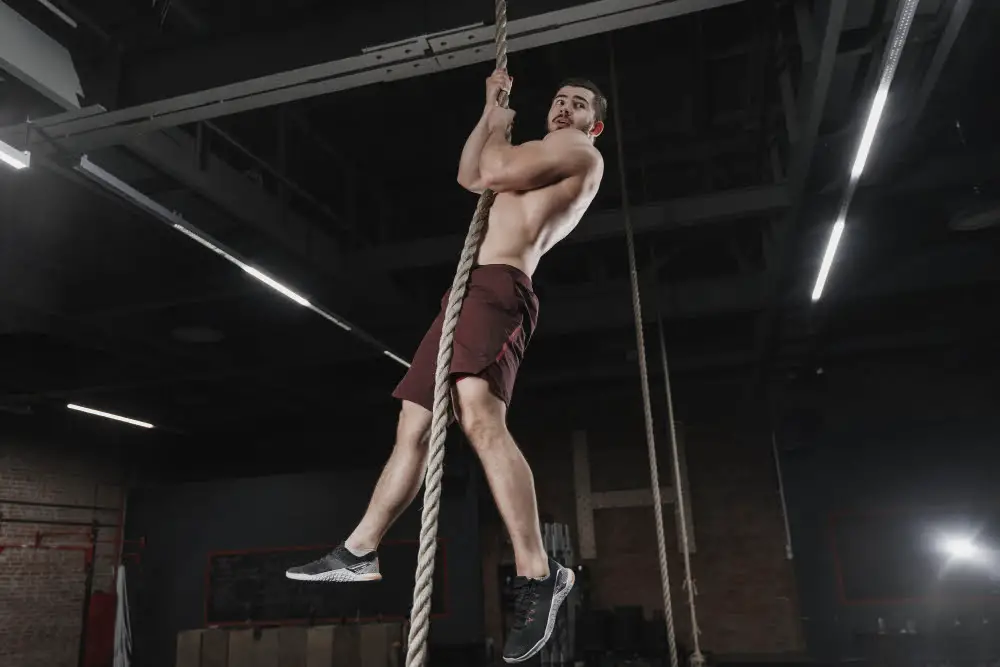
In order to achieve the ideal setup for rope climbing workouts in your garage gym, it’s crucial to focus on a few key aspects.
First, consider the height of your garage. The higher the ceiling, the better, as this will allow for a more substantial climb. But, if the space is limited, even a shorter rope can provide an intense upper body workout.
Next, the type of rope you choose matters. Manila ropes are preferred for climbing due to their grip-friendly nature and durability. They usually come in diameters of 1.5 to 2 inches, with the thicker ones providing a more challenging grip exercise.
Mounting the rope securely is the most vital aspect. You will require a robust anchor point. This could be a beam or truss in your garage ceiling. Using a clamp and a carabiner can grant you the flexibility to remove the rope when needed.
Ensure that you provide ample safety measures like using a thick mat under the climbing area. This prevents injuries in case of accidental falls.
Finally, it can also be a good idea to use gloves while climbing until your hands get accustomed to the texture of the rope, in order to prevent blisters.
Installing a climbing rope can transform your garage gym into an all-encompassing training area, challenging you with a range of workouts from strength-building to cardio. While the initial setup may require some effort, the varied benefits brought by this versatile piece of equipment make it a worthy addition.
Include Gymnastic Rings or TRX Suspension Trainer
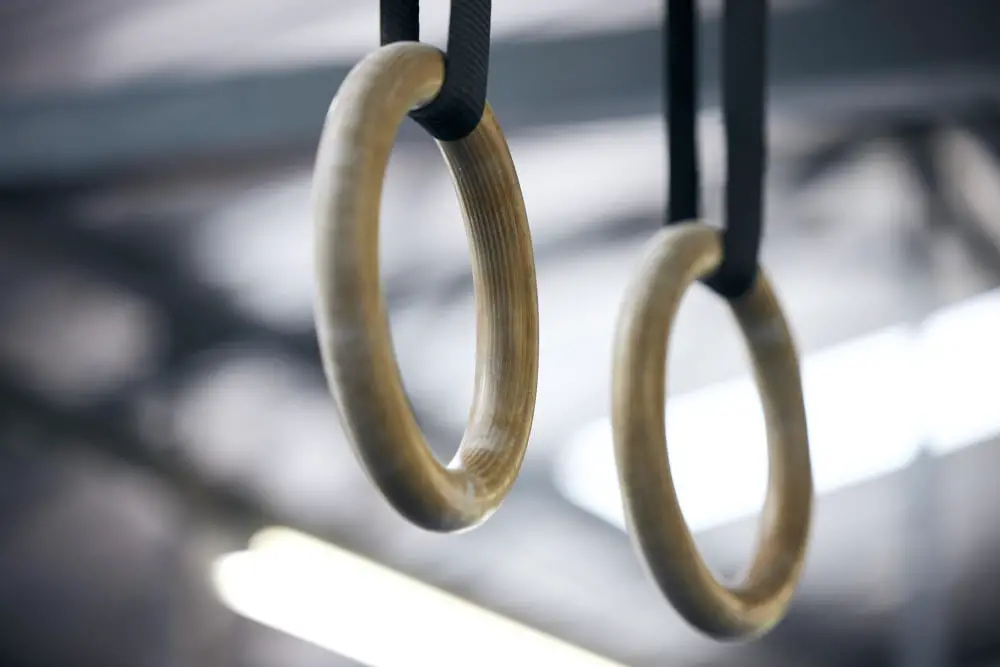
Incorporating either gymnastic rings or a TRX suspension trainer into your garage gym can offer a wide variety of exercises targeting multiple muscle groups. This equipment, while compact and easy to store, provides a comprehensive full-body workout and is adjustable to every fitness level.
Gymnastic rings offer benefits such as improved upper body strength, flexibility, and balance. They are great for exercises like ring dips, pull-ups, and muscle-ups. On the other hand, a TRX suspension trainer uses bodyweight exercises to develop strength, balance, flexibility, and core stability simultaneously. It allows for versatile movements such as rows, squats, and twists.
Installation of either of these tools is straightforward. All you need is a strong anchor point, like an overhead beam or a specially made bracket. Make sure the area has enough space for you to move in all directions during a workout. Are you undecided on which to choose? It ultimately comes down to your personal preference and fitness goals, but you can’t go wrong with either option as both are proven tools for effective and challenging workouts.
Place a Stereo System for Workout Tunes
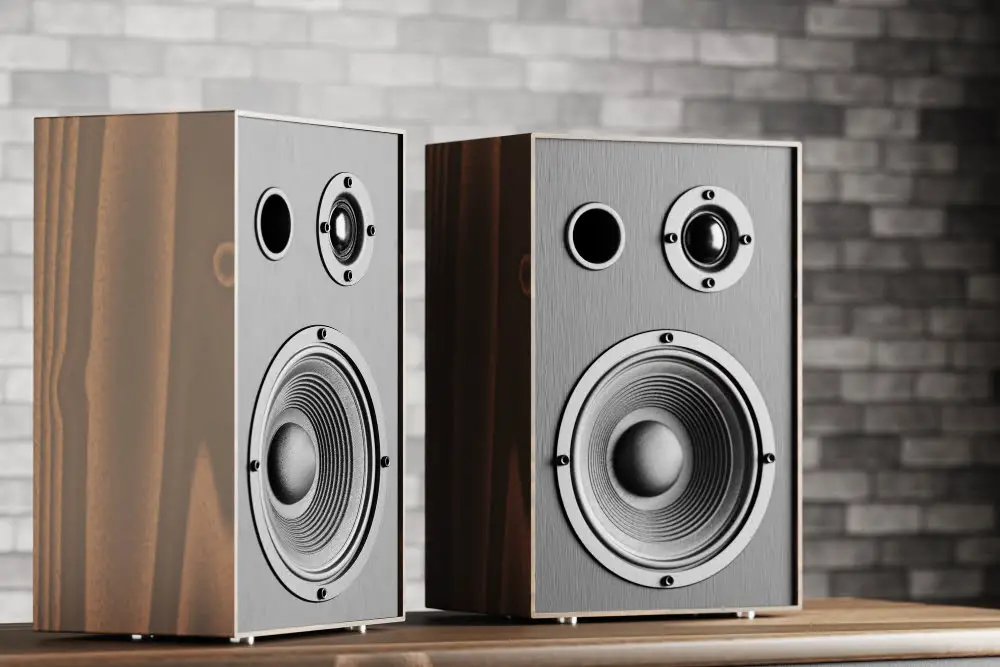
A stereo system enhances the workout experience by providing rhythmic tunes to exercise to. A Bluetooth-enabled system offers seamless connection to devices, allowing you to play your favorite playlists. Look for a system with sturdy build and good sound quality.
Keep the stereo on a shelf at ear level for optimal sound distribution. If you are concerned about dust or damage due to rigorous workouts, consider mounting it on the wall. Using weatherproof or waterproof stereo systems can also be a good choice for durability.
Convenient access to the system is crucial. Place the stereo within reach so that you can easily change the music or adjust volume during workouts.
To save space, consider stereo systems that can be mounted under a cabinet. Alternatively, a portable speaker can serve the purpose well and has the added advantage of being easy to move around.
Remember that this is your personal workout space. Choose a system that suits your needs, can withstand the test of time, and helps create an environment that motivates you to keep exercising.
Have Foam Rollers for Muscle Recovery
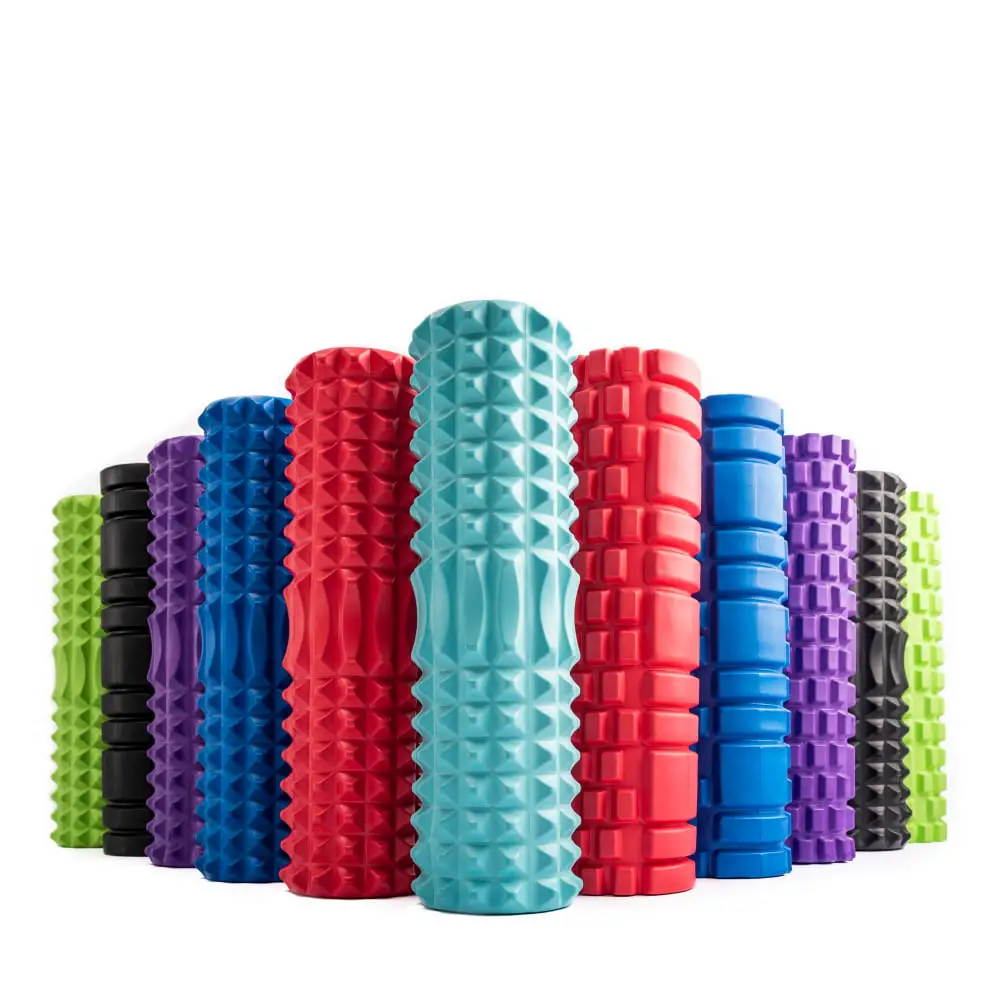
Foam rollers are paramount to a well-rounded garage gym. After an intense workout session, muscles often experience tightness and tension. Utilizing a foam roller aids in easing this post-workout stress, promoting quick recovery and reducing the risk of injury.
It works by applying pressure to specific points on your body, aiding in the recovery of muscles and returning them to normal function. This process – self-myofascial release – provides the muscles with relief and hastens the healing and recovery process after a workout.
Having foam rollers in your garage gym offers several benefits. First, it helps increase blood flow to your muscles, which can aid in recovery. Second, it assists in stretching the muscles and tendons, increasing flexibility and reducing muscular tension. Third, it offers a convenient method of self-massage, working out any knots and tension in the muscles.
Discover the type of foam roller that suits your needs. There are various kinds including the standard foam roller, the firm or extra firm roller for a more intense massage, and the soft roller for those who prefer gentler pressure. You might also consider a textured roller, which offers a more profound and targeted massage.
To use a foam roller, simply place it on the floor, position the part of your body you want to work on top of the roller, and then roll back and forth over it. Ensure to pay attention to any spots where you feel tension or soreness.
Remember that using a foam roller should not be overly painful. If an exercise causes discomfort, it’s a sign that the roller might be too firm, or the exercise too intense. Scale back and find what works for you – after all, your garage gym should facilitate a healthy fitness routine, not cause new injuries or problems.




